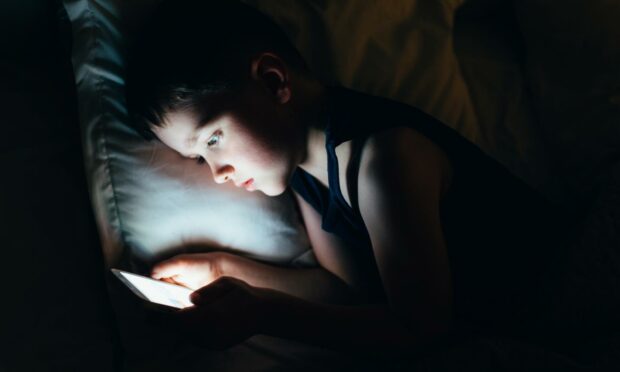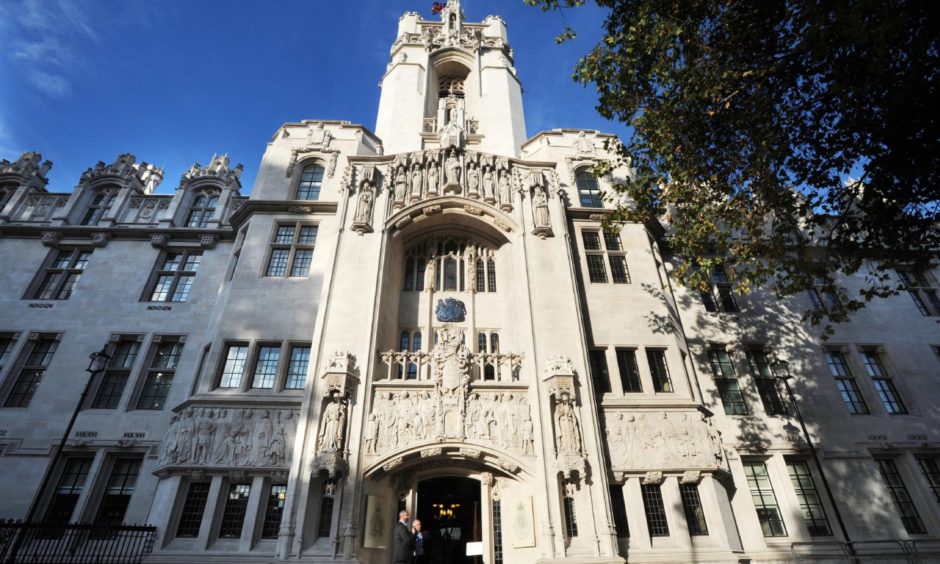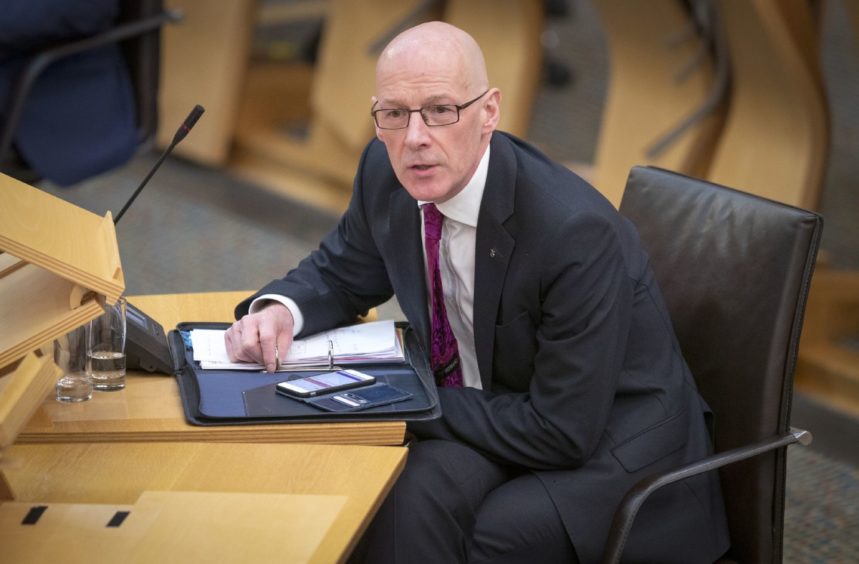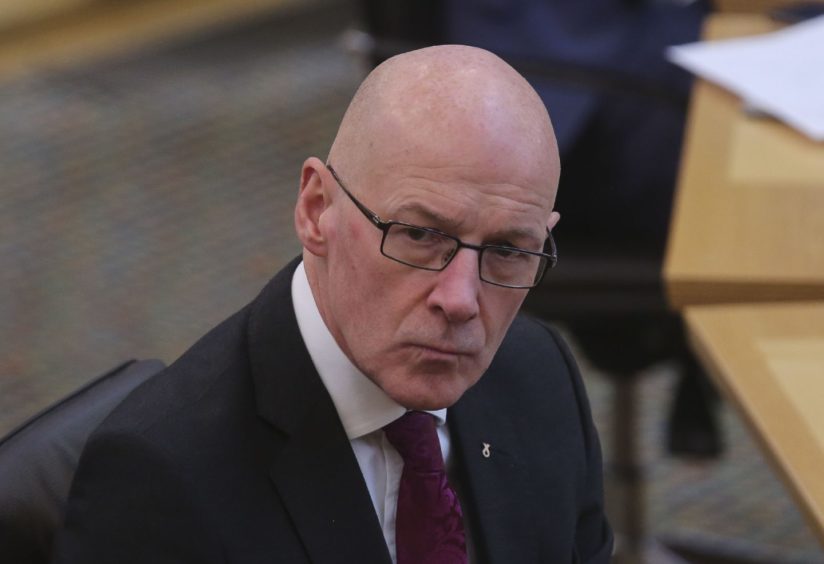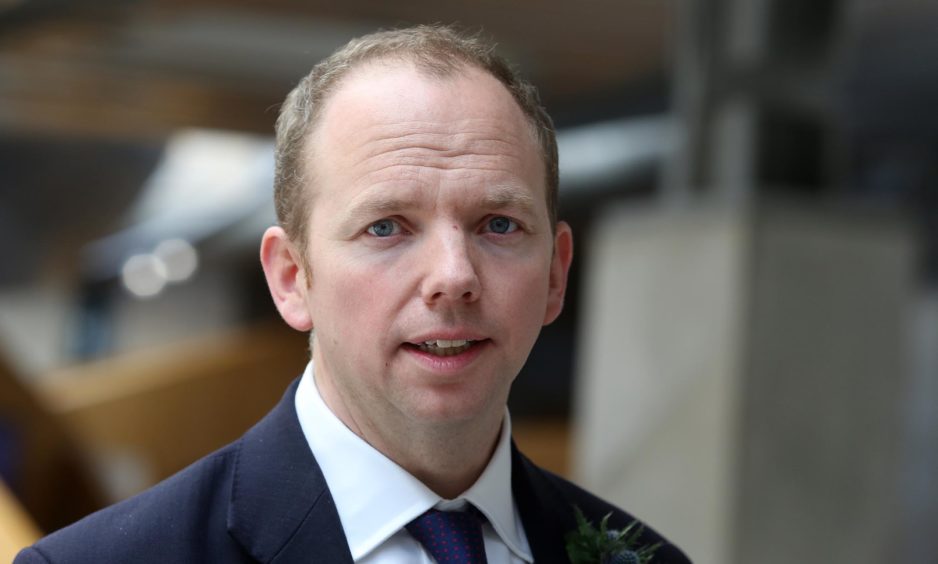Scottish ministers have pledged to push ahead with landmark children’s rights legislation despite a version of the Bill being effectively blocked by the Supreme Court following a legal challenge by the UK Government.
Deputy First Minister John Swinney said the Scottish Government remains committed to incorporating the United Nations Convention of the Rights of the Child (UNCRC) into domestic law to the “maximum extent possible”.
The UNCRC (Incorporation) (Scotland) Bill was backed unanimously by the Scottish Parliament in March but could not be implemented because of a legal challenge brought by UK Government law officers.
Supreme Court judges unanimously decided that four sections of the Bill go beyond the powers of the Scottish Parliament and also sent back a second piece of legislation aimed to incorporate the European Charter of Local Self-Government in Scotland.
In a statement to the Scottish Parliament on Wednesday, Mr Swinney claimed the ruling exposes the limitations in the devolution settlement as he pledged that protections in the Bill will go ahead.
What is the UNCRC Bill?
The UNCRC Bill would make Scotland the first country in the UK, and the first devolved nation in the world, to directly incorporate the UNCRC into domestic law.
It would make it unlawful for public authorities to act incompatibly with the incorporated UNCRC requirements, giving children, young people and their representatives the power to go to court to enforce their rights.
The UNCRC is the most widely ratified human rights treaty in the world and sets out the specific rights of children, including to health and education, leisure and play, fair and equal treatment, protection from exploitation and the right to be heard.
Meanwhile, the European Charter of Local Self-Government (Incorporation) (Scotland) Bill was intended to develop and strengthen the relationship between the Scottish Government and local authorities in Scotland.
Why was the Supreme Court involved?
While the Scottish Parliament has powers to make new laws over a number of areas, some other issues – known as “reserved matters” – remain solely under the control of the UK Parliament.
The UNCRC Bill was passed at Holyrood but the UK Government raised concerns that parts of the Bill exceeded the powers of the Scottish Parliament and asked the Supreme Court to make a ruling.
“No-one disputes the right of the Scottish Parliament to regard the UNCRC as an important convention and to give effect to it, provided that it does so within the limits of its legislative competence.”
The judges focused solely on technical matters and did not look at the intention behind the Bill or the Scottish Parliament’s ability to incorporate the UNCRC.
What the judges looked at
The Court ruled that Section 6 of the Bill, which defines a public authority, was drafted very broadly, meaning it could apply to UK authorities acting in reserved areas.
The judges said Section 19, which looks at how laws should be interpreted to make sure they respect children’s human rights, would give Scottish courts the power to interpret UK laws in such a way that it could change their intended meaning.
They found a similar issue with Section 20 and Section 21, which allows Scottish Courts to strike down or make a declaration against a law, as these powers could also be used on laws passed by the UK Government.
What happens next
The Supreme Court said the Bill should return to the Scottish Parliament so MSPs can address their concerns.
After the Bill is amended and Royal Assent is given, it will automatically enter into force six months later – or sooner if the Scottish Government chooses for it to do so.
Deputy First Minister John Swinney told the Scottish Parliament: “This Bill will not now become law in the form which our Parliament agreed, but we remain committed to the incorporation of the UNCRC to the maximum extent possible as soon as practicable.
“Whilst the judgment means that the Bill cannot receive Royal Assent in its current form, the majority of work in relation to implementation of the UNCRC can and is continuing.
Message for children, young people and other human rights defenders who are disappointed that today’s judgment means incorporation of UNCRC will take longer than we hoped. @CYPCS @together_sacr pic.twitter.com/rV4g7We72m
— Bruce Adamson (@Bruce_Adamson) October 6, 2021
“The UNCRC is the most widely ratified international treaty, but very few countries have committed to take the journey that Scotland so clearly wants to take.
“To everyone who has walked with us this far on that journey, encouraging us along the way, I want to reassure you that we will reach our destination.
“This Government remains committed to the incorporation of the UNCRC to the maximum extent possible.”
What does the ruling mean
Mr Swinney told MSPs there is “no doubt that we may not yet wholly comprehend all the implications from this judgment”.
He said: “It makes plain that we are constitutionally prohibited from enacting legislation that the Scottish Parliament unanimously decided was necessary to enshrine and fully protect the rights of our children.
“The judgment exposes the devolution settlement as even more limited than we all – indeed the Scottish Parliament itself - had understood.
“It sets out new constraints on the ability of our elected Scottish Parliament to legislate to protect children’s rights in the way it determines.
“There is no doubt that the implications of this judgment are significant from a children’s rights perspective.”
Children and Young People’s Commissioner Bruce Adamson said the past 18 months had shown ” just how urgent” it is to strengthen rights protections for children, and pledged to work with the Scottish Government and the Scottish Parliament in its role as a Human Rights Guarantor to make the Bill law “as soon as possible”.
Legally problematic
Conservative MSP Donald Cameron said his party had warned some parts of the Bill would be “legally problematic”.
“To their shame, the SNP did not listen and instead politicised this from the very beginning,” he said.
Mr Cameron said the SNP’s “political posturing has been comprehensively demolished by the definitive judgment of the Supreme Court”.
When his party colleague Meghan Gallacher accused the deputy first minister of stirring up “constitutional grievance”, Mr Swinney replied: “The straightforward way through this would have been for our Bill to get royal assent without objection from the UK law officers.
“It was supported by every single member in this parliament. Why on earth are the Conservatives objecting to the passage of legislation that they themselves supported?
“Do they not understand how absolutely ridiculous their argument is today?
“This parliament made its choices about how it wanted to deliver the maximum protection for children and young people in our country and the people who’ve got in the road of that, the people who’ve interrupted it, are the UK Government’s law officers.”
